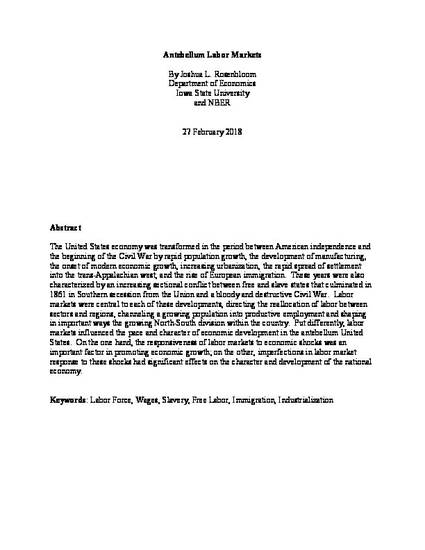
The United States economy underwent major transformations between American independence and the Civil War through rapid population growth, the development of manufacturing, the onset of modern economic growth, increasing urbanization, the rapid spread of settlement into the trans-Appalachian west, and the rise of European immigration. These decades were also characterized by an increasing sectional conflict between free and slave states that culminated in 1861 in Southern secession from the Union and a bloody and destructive Civil War. Labor markets were central to each of these developments, directing the reallocation of labor between sectors and regions, channeling a growing population into productive employment, and shaping the growing North–South division within the country. Put differently, labor markets influenced the pace and character of economic development in the antebellum United States. On the one hand, the responsiveness of labor markets to economic shocks helped promote economic growth; on the other, imperfections in labor market responses to these shocks significantly affected the character and development of the national economy.
Available at: http://works.bepress.com/joshua_rosenbloom/50/

This is a working paper of a chapter from Oxford Research Encyclopedia of American History (2018). Oxford University Press. doi: 10.1093/acrefore/9780199329175.013.523.